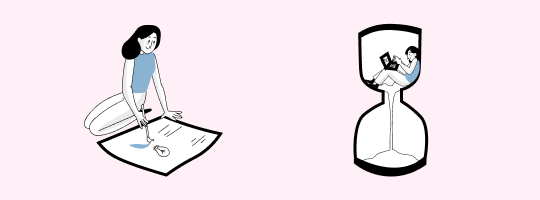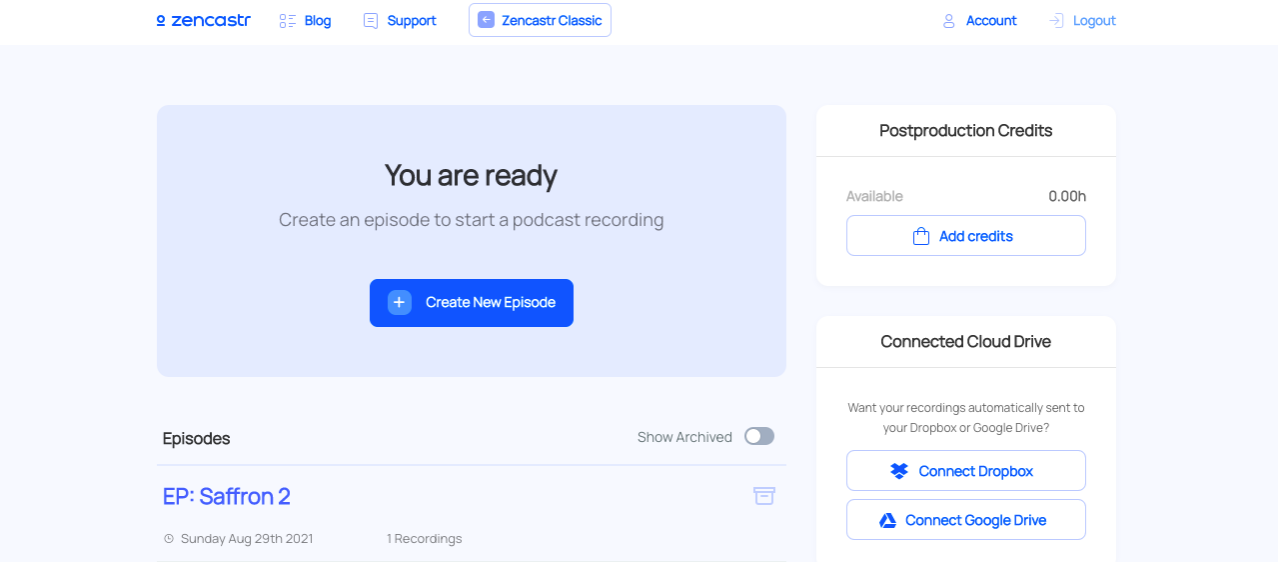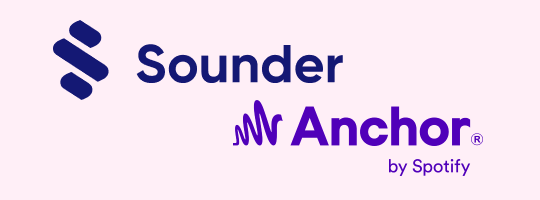How I Started My Own Podcast
By: Antonia Le ‘22
I’ve had a lot of time to kill over the past few Zoom semesters, so I started listening to a lot of podcasts. Podcasts are perfect for long walks around campus, running errands at Target, and my all-too-dreaded weekly chores.
As an avid podcast listener, I started thinking: “Why can’t I start my own thing?”. I’d like to say that I had a noble reason for starting a podcast. Truthfully, though, I just wanted to see if I could do it…and I did. With only four episodes out, I wouldn’t consider myself an expert, but I hope talking about my own experiences can show people that you don’t have to create something groundbreaking to have a lot of fun and learn a lot!
Coming Up With An Idea
The first step to starting a podcast is figuring out what you want to talk about. For this, I looked toward things that inspired me. As a Screenwriting minor, I love movies, TV, and storytelling, so I knew that I wanted to create some sort of podcast that touched on those topics. Over the pandemic, I started watching a lot of CW shows, so that seemed like something that would be fun to talk about. I also found it funny how I was 21 years old and still in love with YA media, and that gave me my hook: “Why don’t I start a podcast covering YA media from an adult perspective?”
After a lot of personal deliberation and annoying my friends with messages asking, “do you think this is okay?”, I finally came up with a name and concept for my podcast: Not As Young Adult (or nayapod for short), “a dive into the world of YA books, shows, and movies that aims to figure out why adults are still obsessed with it.” After I had that settled, all I had to figure out was what exactly it would sound like.
It’s on Spotify and everything!
Figuring Out a Format
Funnily enough, nayapod is not the first podcast idea that I’ve ever had. Around the Summer of 2020, I had been talking to two of my friends about the possibility of creating a podcast together. We had an entire Google Doc filled with ideas for it; I even made some mock-ups of possible art. However, we all lived in different time zones and had busy schedules, so things fell through. That experience showed me that I wanted to have a podcast that I could work on myself so that I could minimize scheduling conflicts.
Working on a podcast by yourself comes with a lot of limitations. For one thing, many popular podcasts have a whole team of people working behind the scenes to put out episodes; you’ve got hosts, editors, producers, researchers, etc. all coming together like a well-oiled machine. As someone taking on this project on her own, I knew that I needed to figure out a format that worked for me.
Most importantly, I decided that the podcast would only come out every other week instead of weekly. I knew that I wanted to be able to balance podcasting with work and school, and this schedule would allow me to stretch out fewer episodes over a longer period so that I would have more time to edit episodes instead of rushing to put something out every week.
I also decided that each episode would be between 40 and 50 minutes long. I prefer longer podcasts over short ones, and I wanted to create something that reflected my tastes. Though many podcasts I like have episodes close to an hour long (or even longer), I knew that trying to make long episodes would be rough on my school and work schedule. Having episodes that were around 45 minutes long felt like a happy medium.
Because I didn’t have a co-host, and I knew it would be boring for the podcast to be just me talking, I decided to interview a different guest every episode. When deciding who to invite, I prioritized people I was friends with (because we would already have a rapport) and those who had strong opinions on books, movies, or TV shows. Though many interview-style podcasts try to bring on experts in the field, I just tried to bring on people who would be fun to talk to, regardless of any qualifications.
For my podcast, I tried to balance genuine media criticism with fun jokes. I wanted it to have the vibes of a deep conversation with a friend, the way you can talk about meaningful things but still joke around with one another. To achieve this, I created a general structure for every episode to follow:
I introduce my guest and what they do.
I ask them some serious interview questions I’ve prepared and bring up some things I’ve noticed in my research regarding the topic.
To close out, we have a fun lighting round segment where I ask my guest fun questions in the vein of “cats or dogs” to end on a light note.
The guest has a chance to promote their social media, and we say our final words. I usually make a lame dad joke to end the episode.
Before each episode, I research the topic and write down questions I want to ask the guests along with other things I hope to bring up in conversation. Sometimes, I even write jokes I want to make so that I don’t forget or stutter.
In general, a lot of thinking goes into figuring out what a podcast is, and even more planning goes into making sure an episode sounds like it flows naturally, despite all the planning. Creating a podcast on your own is not for the faint of heart, but if you’re willing to put in the work, you can make something awesome.
Making The Thing
Once I finished planning, it was time to start making the podcast.
The first order of business was buying a microphone. Though I could have simply used the built-in microphone that came with my headphones, I wanted to have good audio. At the same time, I didn’t want to drop hundreds of dollars on a brand-name microphone if I was going to quit after 2 episodes (I have a tendency to quit my hobbies). I spent a lot of time looking for an affordable microphone online and ended up finding one on Amazon for less than 30 dollars.
The Zencastr Interface
Next was figuring out how to record remotely. I use Zencastr to record because it had a free option, and the audio quality is better than recording over Zoom. Using Zencastr is also very simple; all I had to do is send my guests a meeting link to set things up, similar to Zoom. Though the website does tend to glitch and stop recording in the middle of a conversation sometimes, I can’t complain because of how much it offers while still being free.
The Descript Logo
I used the money that I saved in my recording and put it into my editing. To edit my podcast, I purchased a subscription to Descript. Though there are free options like GarageBand and Audacity for editing podcasts, Descript offers transcription and allows me to edit podcasts like I’m editing a Google Doc. As someone who can struggle to focus when I don’t have visual as well as auditory stimuli, Descript is helpful because it allows me to see the words. Additionally, being able to edit words instead of audio files allows me to sometimes listen to music while I’m editing, making the process a little less tedious.
In general, I wouldn’t recommend my setup to someone who wants to seriously pursue podcasting as a career or is trying to save money, but what I have now works well enough for someone trying out a new hobby.
Getting It Out Into The World
If you want to be a YouTuber, you upload videos onto YouTube. If you want to be a Tik Tok star, you start making Tik Toks. Creating a podcast is different because everyone finds their podcasts from a different source, whether it’s Apple Podcasts, Spotify, Stitcher, or something else completely. That’s why having a podcast hosting platform is important. You can upload episodes of your podcast to the platform, and it will distribute the episode to all the main podcast players for you.
For my platform, I had to decide between two options: Anchor and Sounder. Though there are dozens of platforms, Anchor and Sounder were both free and seemed easy to use.
For those who want a more hands-off approach, Anchor is the way to go. It automatically distributes episodes to various platforms after you upload them.
Those who use Sounder have to submit their podcast RSS feeds to distributors like Spotify and Apple Podcast after the first episode is uploaded. However, after this first episode, you can upload episodes to Sounder and let it do all the distribution for you.
I use Sounder because I wanted more control over where my podcast ended up and how it looked; because Anchor distributes podcast feeds automatically from the jump, it’s harder to have control over what happens.
To promote my podcast, I sent episode links to my friend and even started a Twitter where I could post about it. I’ve heard of podcasts also having their own Instagram and Tik Tok accounts, but because I’m working on this podcast on my own, I think Twitter is enough for now.
Miscellaneous Tips for Starting Your Podcast
Be flexible: Some of the best parts of my podcast were when I threw out my own questions and let my guests talk about something that they found interesting. Generally, if your guest is having fun, your audience will have fun too.
Kill your darlings: I’ve left so much audio on the cutting room floor that I think I could make one—maybe even two—whole episodes with things that I’ve cut, and my episodes are better for it. Don’t be afraid to cut things that aren’t working to let better things shine.
Ask for help: Even if you’re set on doing everything yourself (like I am), there’s no shame in running an idea by your friends or family! Having a fresh pair of eyes on your work will only make it better.
Conclusion
Sometimes, it feels like everywhere you look, someone’s starting a podcast, from A-list celebrities to Tik Tokers to that random girl writing on a USC blog. This is because in many ways, starting a podcast is something anyone can do. All you need is yourself and something to record with.
If you’re looking for a new creative endeavor (or maybe just something to add to your resume), why not start a podcast? Podcasting is a great way to sharpen your organization and public speaking skills. If nothing else, it’s an excuse to sit on a video call with your friends for an hour and talk about something interesting. I still have a lot to learn about making a podcast, but I’m having so much fun along the way.
Would you like a more in-depth look into the work that goes into my podcast? A thorough explanation of my planning process? Or maybe even a Trojans360 podcast? (Maybe not that last one.) Let us know through the Trojans360 ask box or tells Trojans360 on our social media!
Credit: Free illustrations sourced from Storyset and Pixeltrue.
Want more from Trojans 360?
Visit Trojans 360 on Facebook & Twitter to stay up to date with more student content! You can also Ask A Trojan an anonymous question, and we’ll try to answer it in a future post. And don’t forget to follow us on Instagram!
Trojans 360 is USC’s official student-run blog. Content created by students, for students.










